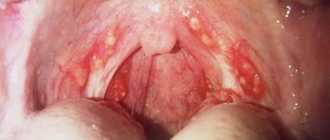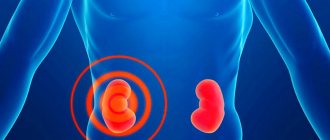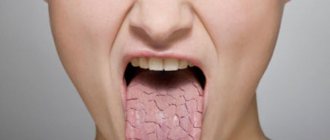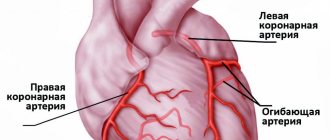Causes of sore throat
All causes of a sore throat can be divided into two large groups:
- infectious:
these include, among others, various colds of the upper respiratory tract, for example, pharyngitis (inflammation of the pharyngeal mucosa) and laryngitis (inflammation of the larynx mucosa). They can develop against the background of viral, bacterial and fungal infections. In addition to a sore throat, such diseases are accompanied by fever, symptoms of intoxication (headache, weakness, loss of appetite), runny nose, dry or wet cough; - non-infectious:
in this case, tickling may be due to:
- allergic reactions - to dust, plant pollen, particles of epidermis and animal hair, to food and drinks;
- excessive load on the vocal cords - among teachers, singers, actors;
- inhalation of substances with an irritating effect (tobacco smoke, hot, cold and dusty air, industrial and chemical dust);
- neurotic reactions;
- injuries to the pharynx and foreign bodies (fish bone, food particles stuck to the mucous membranes, small parts of toys in children). allergic reactions - to dust, plant pollen, particles of epidermis and animal hair, to food and drinks;
- excessive load on the vocal cords - among teachers, singers, actors;
- inhalation of substances with an irritating effect (tobacco smoke, hot, cold and dusty air, industrial and chemical dust);
- neurotic reactions;
- injuries to the pharynx and foreign bodies (fish bone, food particles stuck to the mucous membranes, small parts of toys in children).
Diagnosis and treatment
To identify the root cause, your doctor may order the following tests:
- X-ray;
- fluorography;
- bronchoscopy;
- auscultation;
- percussion;
- blood tests for allergens.
The main goal of treating a dry cough is to transform it into a wet cough - productive with sputum discharge. Treatment is complex, using medications, physiotherapy, and in some cases traditional medicine.
Drug therapy includes: antiviral, antitussive, antihistamine, mucolytic agents, antibiotics. It is important to know that taking antitussive drugs without a doctor’s instructions is strictly prohibited - this can cause the accumulation of mucus in the respiratory tract and lead to stagnation of mucus in the lungs, and this will lead to serious complications.
Physiotherapeutic procedures include:
- warming up;
- inhalation;
- UHF;
- acupuncture;
- electrophoresis.
How to get rid of a sore throat?
Non-drug methods.
Before you get rid of a sore throat, you need to find out the exact reasons that caused it. In situations where the diagnosis of a cold is beyond doubt (there are other typical symptoms), and the infection itself is relatively mild, you can limit yourself to non-drug therapy and the use of safe medications, preferably natural remedies.
Even a slight sore throat should not be left unattended - if left untreated, the disease can “go downhill” involving the lower respiratory tract in the inflammatory process or become chronic, intractable. For non-drug treatment of sore throat, the following is also used:
- warm drink. It is recommended to take warm (not hot or cold!) liquid, with a temperature of about 40°C. For non-allergic inflammation, irritation of the laryngeal mucosa can be prescribed with herbal decoctions, tea with honey, milk with a small amount of butter and soda (on the tip of a knife). If you are prone to allergies, it is preferable to use heated mineral water, tea, or plain boiled water. The liquid should be drunk in small sips, holding it in the mouth for some time, as often as possible;
- rinsing with warm alkaline solutions, decoctions of anti-inflammatory herbs;
- warming, distracting and physiotherapy (foot baths, inhalations, FUF, etc.).
Medication methods. In cases where it is not possible to get rid of a sore throat for a long time (a week or more) or if other alarming symptoms are noted (high temperature, severe weakness, severe cough), it is recommended to consult a doctor and, after prescribing, use medications:
- products for topical use - lozenges and lozenges, throat sprays, antiseptic solutions for rinsing;
- agents for systemic use – anti-inflammatory, antiviral, antimicrobial, etc.
Gargling treatment for throat
Rinsing is an effective way to combat bacterial and viral diseases. Depending on what components are included in the rinse, it has an antiseptic, anti-inflammatory and analgesic effect.
How to quickly cure a throat by gargling? To do this, you need to select the appropriate ingredients and adhere to the treatment regimen. You can gargle with a solution containing salt, soda, iodine, honey, propolis and other ingredients. Each of them has special properties and helps get rid of pain, itching, and wheezing.
The simplest and most popular option is saline rinsing. To do this, heat 250 ml of water and stir half a teaspoon of salt in it. On the first day, gargle every hour, then reduce the number of gargles to 3-4 per day.
Salt is used for gargling: Pixabay
Salt acts as an antiseptic, relieves swelling and pain, but can lead to dry mucous membranes, so this option is not used for dry coughs. As Chris S. Anderson explains, salt acts as a magnet for water and draws a lot of fluid from the tissues in the throat area.
For respiratory diseases, a solution with salt, iodine and soda is often used to rinse. To prepare it you will need 250 ml of hot water, a teaspoon of salt, half a teaspoon of soda and 1-2 drops of iodine. Gargle with this solution 3-5 times a day until the pain goes away. Iodine enhances the antiseptic effect of salt, but if you have thyroid problems, do not use it without consulting your doctor.
To prepare a solution of honey with propolis, you first need to make an aqueous extract of propolis, since it does not dissolve in water. Take 100 grams of propolis and add a liter of warm water (50 °C). Let it brew for 24 hours, then strain and add 3-4 tablespoons of honey. Stir and rinse 3-5 times daily. Propolis effectively destroys bacteria and viruses and accelerates the restoration of damaged tissues. Honey softens the throat, eliminates pain and strengthens the immune system.
Herbal cough lozenges Doctor MOM®
To treat a sore throat, you can use a natural preparation - Doctor MOM® herbal cough lozenges with the “FITO BRONHO formula”1 with extracts of 3 medicinal plants. The drug is approved for use in adults (from 18 years of age) for resorption in the oral cavity - 1 lozenge every 2 hours, up to 10 lozenges per day. Herbal cough lozenges Doctor MOM® have a complex anti-inflammatory, analgesic, antispasmodic and expectorant effect. The active components of the product reduce the manifestations of inflammation and irritation of the mucous membrane of the upper respiratory tract, which helps eliminate soreness, discomfort and a feeling of dryness in the throat. Doctor MOM® lozenges are indicated for the symptomatic treatment of infectious and non-infectious inflammatory diseases of the upper respiratory tract (including “lecture” laryngitis ), accompanied by a sore throat and an unproductive, obsessive cough.
Treatment of throat with tea
Tea is one of the most effective ways to relieve a sore throat. Warm liquid speeds up metabolism and helps quickly remove pathogenic bacteria from the body, and the tea ingredients contain beneficial substances.
How to quickly cure a throat with tea? To make tea, use chamomile or sage, rose hips or sea buckthorn, mint, lemon or calendula. These ingredients have anti-inflammatory, analgesic, and softening properties. They help destroy bacteria on the mucous membrane of the throat, restore its integrity, relieve swelling and relieve pain.
Chamomile tea for throat: Pixabay
To prepare medicinal chamomile tea, take two tablespoons of dried chamomile, pour boiling water over it and let steep for 10–15 minutes. After this, you can add honey and lemon to the drink.
To relieve a sore throat, drink peppermint tea. It contains menthol, which has a mild anesthetic effect. This allows you to quickly relieve pain and soothe the mucous membrane. Mint can be added to any tea.
Ginger tea will help with an itchy throat. To prepare the drink, put black or green tea in a teapot, add a slice of fresh ginger root and pour boiling water. Let it brew for 15 minutes.
How to use a nebulizer to treat purulent sore throat?
To treat purulent sore throat, you can also use a nebulizer. This will block the spread of pathogenic bacteria over a large area and help restore tonsil tissue. In some cases, this method makes it possible to avoid the use of antimicrobial drugs or, at a minimum, reduce their dosage.
An additional advantage of using a nebulizer for sore throat is the analgesic effect. This is especially important for children, because if a sore throat appears, they may well refuse to eat. Insufficient intake of nutrients into the body creates additional stress on all systems and prevents rapid recovery. After inhalation, the pain decreases or disappears completely, and it becomes much easier to feed the child.
The doctor selects medications for inhalation; self-medication can lead to negative and even dangerous consequences. Usually in such cases the following are prescribed:
- Chlorphilipt – when the cause of the disease is streptococcus;
- Miramistin is an antiseptic drug that eliminates pathogenic microorganisms;
- Dioxidin – has a disinfectant effect on the tonsils;
- Tonsilgon – has a disinfecting and anti-inflammatory effect.
The first three drugs must be diluted with saline solution in the dosage prescribed by the doctor. You can do inhalations with mineral water - Narzan, Borjomi, Essentuki. This will eliminate swelling in the nasopharynx, activate the restoration of damaged tissue, and block the activity of pathogenic bacteria.
What is a nebulizer and what are its advantages?
The word “nebulizers” refers to a type of inhaler that provides a more precise effect on certain areas of the respiratory tract. Such devices convert liquid medications into aerosols and deliver them to the respiratory system. Previously, this method was used only in medical institutions, but now there are convenient and easy-to-use home devices.
Using a nebulizer for inhalation provides several advantages:
- Medicines are specifically delivered to the affected areas, significantly enhancing the effect;
- Unlike the traditional method of inhaling steam, when using an inhaler there is no risk of burning the mucous membrane;
- The device is suitable for treating very young children and seriously ill patients;
- There are no gases or solvents that cause respiratory irritation, as is the case with a metered dose inhaler.
In addition, the nebulizer allows you to clearly dose the amount of medication and does not require special skills: anyone can use it, just read the instructions and follow them exactly.
Why is the throat red - non-infectious causes
- Food colorings. It is especially common in children: the child has eaten one or two caramels, and his throat turns red. Very often, colored lollipops actually stain the mucous membrane of the throat, so if you notice redness of the mucous membrane, drink warm tea or give your child water. Check the result after 30-40 minutes. If the throat is no longer so red, or the pink color has returned, then the reason turned out to be harmless and banal.
- Impaired nasal breathing. When a person breathes through the mouth, the vessels on the surface of the mucous membrane become tense and congested.
- Smoking.
- Thermal, chemical, drug burns.
Infectious causes of red throat:
- Viral diseases.
- Colds.
- A history of chronic throat diseases is a period of exacerbation.
In all cases, with the exception of exposure to dyes, the mechanism of redness of the throat is identical: blood flows to the vessels of the pharynx, throat and tonsils more intensely due to inflammation, as a result of thermal or chemical exposure. At the same time, the vessels dilate, which leads to redness of the mucosa, which is recorded during visual inspection. Redness of the throat also causes pain.
Nebulizer efficiency
Inhalations for the throat provide a comprehensive effect:
- Suppress inflammation;
- Relieve swelling;
- Destroy pathogens;
- Moisturize the mucous membrane, stimulate the restoration of its cells;
- Increase local immunity.
But there are also some contraindications. Do not use the nebulizer if the body temperature is above 37.5o, heart failure, arrhythmia, or pulmonary hemorrhage. The ban applies to people who have recently suffered a heart attack or stroke, as well as certain diseases of the respiratory system.
Is it possible to do inhalations for a sore throat?
Using a nebulizer for a sore throat is a completely reasonable decision, since this method helps to quickly relieve inflammation and remove plaque. However, the procedure should be carried out only after consultation with a doctor who selects medications and their dosage.
Sore throat is a type of tonsillitis, i.e. inflammation in the tonsils. The disease is accompanied by severe discomfort and pain when swallowing, redness of the tonsils, an increase in their volume, the appearance of purulent plugs, ulcers, and white plaque.
Inhalations for sore throat are prescribed as an addition to rinsing and taking medications. There are several reasons to use such a device:
- Inhalations can reduce the duration of the acute phase of the disease and the time of taking medications, as well as their doses;
- Impact on the respiratory tract prevents dangerous complications that often develop against the background of sore throat;
- The procedure helps relieve pain and stops the inflammatory process;
- Inhalation thins the mucus coming out of the nose, relieves swelling in the nasal sinuses and makes breathing easier.
Inhalations for angina accelerate the healing of damaged tissues and generally contribute to a rapid recovery.









